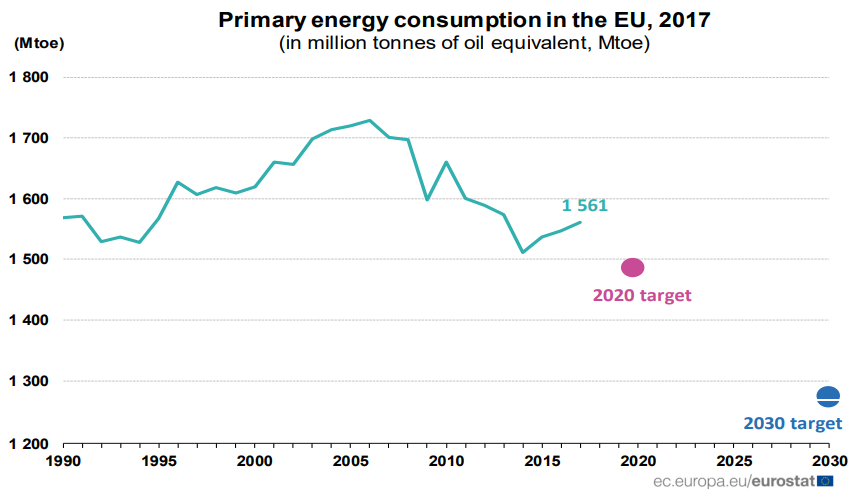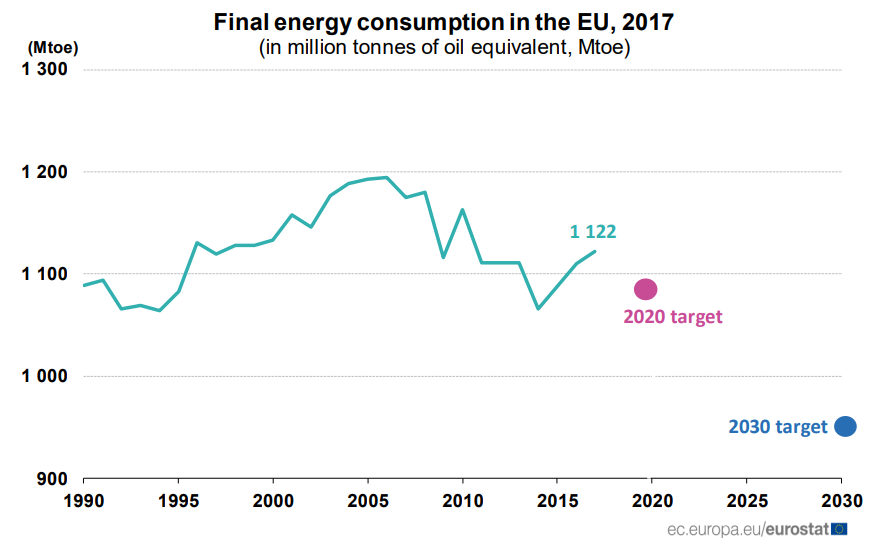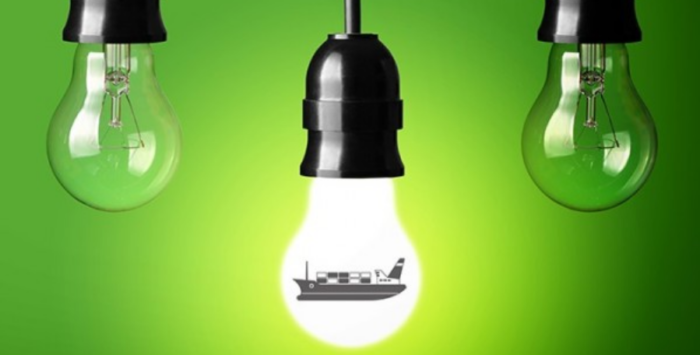During 2017, Europe’s energy consumption increased by 1%, for a third year in a row, causing the EU to keep moving away from the energy efficiency targets. Primary energy consumption amounted to 1.561 million tonnes of oil equivalent (Mtoe), whereas final energy consumption reached 1.222 Mtoe. In comparison to 2018, both levels rose by around 1%. The EU has committed itself to binding energy efficiency target of reducing energy consumption by 20% by 2020.
Specifically, the energy consumption should be around 1.483 Mtoe and the final energy consumption to no more than 1 086 Mtoe in 2020.
The revised Energy Efficiency Directive created a new energy efficiency target for 2030. According to the new aim, the primary energy consumption of no more than 1.273 Mtoe and a final energy consumption of no more than 956 Mtoe, equal to a decrease of 32.5%.
In 2017, primary energy consumption in the EU was 5.3% up than the efficiency target for 2020.

As since 1990 the first data were available, consumption has experienced a decrease by 0.4%.
Yet, the primary energy consumption has fluctuated greatly.
It peaked in 2006, reaching 1.729 Mtoe representing a 16.6% gap from the 2020 target, while a record low was reached in 2014, with 1.511 Mtoe representing a 1.9% gap from the 2020 target.
In the last three years the consumption has repeatedly increased to 1.537 Mtoe in 2015, 1.547 Mtoe in 2016 and 1.561 Mtoe in 2017.
Over the last three years the consumption rose again, to 1 537 Mtoe in 2015, 1 547 Mtoe in 2016 and 1 561 Mtoe in 2017.
In 2017, final energy consumption in the EU was 3.3% up than the efficiency target for 2020. Final energy consumption in the EU peaked in 2006, reaching the 1.195 Mtoe and decreased by 0.6% p.a. between 2006 and 2017 (1 122 Mtoe). Since the beginning of the new millennium, the lowest level of final energy consumption was recorded in 2014.































































